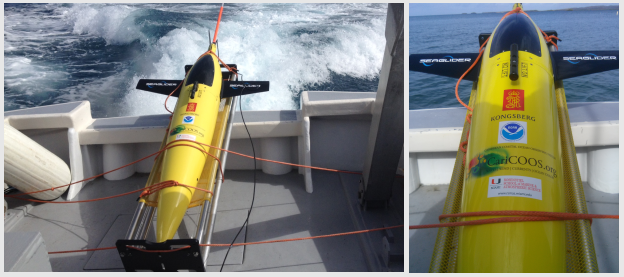What is an underwater glider?
An underwater glider is an autonomous underwater vehicle (AUV) that uses small changes in buoyancy together with wings to propel itself by converting vertical motion into horizontal motion. Thanks to a very small consumption of energy, underwater gliders have longer ranges when compared to other AUVs, being able to measure several ocean parameters during a period of weeks or months along thousands of kilometers. Gliders use different sensors to measure ocean temperature and salinity profiles. Depending on the instruments installed in the devise, they can also measure ocean currents, chlorophyll fluorescence, optical backscatter, and bottom depth among other parameters. Gliders are commanded remotely via satellite and data transmissions are performed in real-time.
